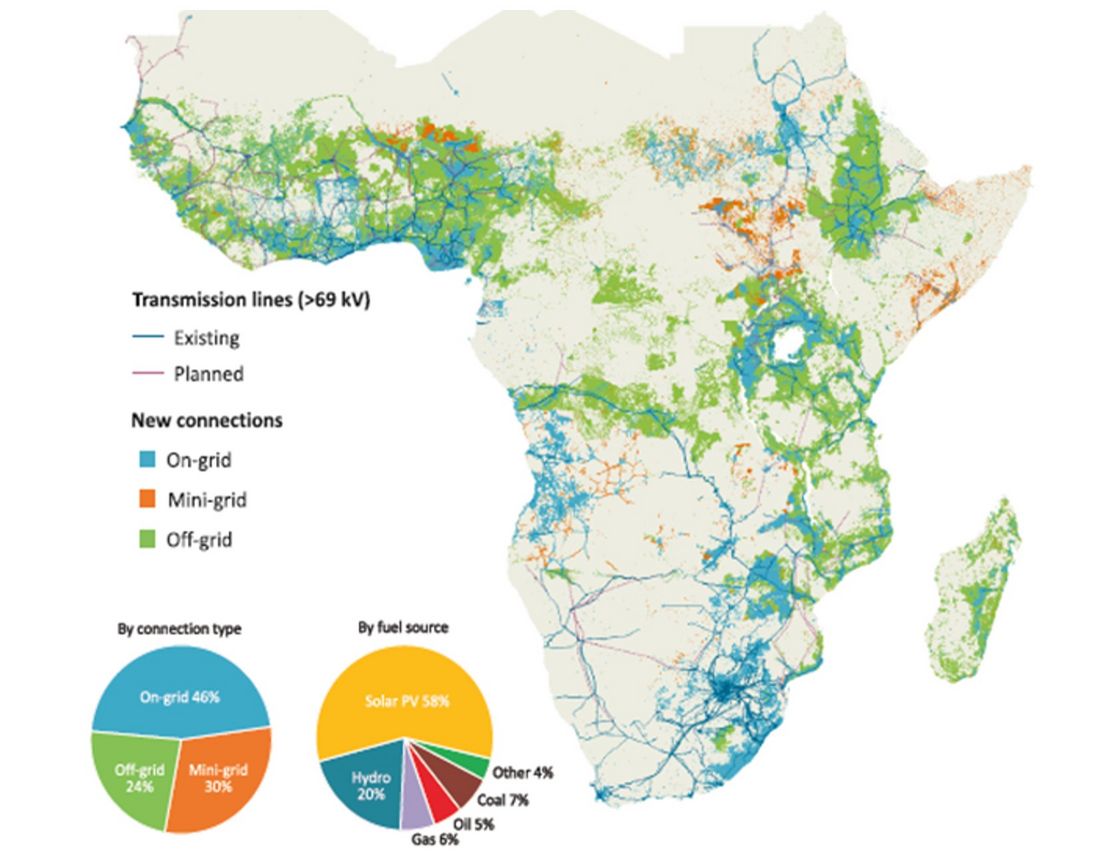Rural Electrification
The backlog of people living without access to electricity is still significant in many developing countries around the globe. Grid-tied and off-grid solutions, with a myriad of technology options associated with each of these, provide an opportunity for these countries to close the gap. It provides a capability to leapfrog the development of electricity infrastructure via innovative solutions to enable electricity access to the majority of the population. Many of the countries also have abundant energy resources available to them, such as solar, hydro and wind, however invariably the cost of creating the associated assets, and operating and maintaining them in the remote rural communities, remains a challenge.
Optimal technical solutions, accompanied by stable political, regulatory and market platforms, provide the essential mix to facilitate the rollout of rural electrification programs across the globe. The integration of growing shares of renewable energy sources will also contribute to the overall reduction of carbon emissions, whilst expanding the rural electrification footprint in the world.
Convenor
(ZA)
K. DEDEKIND
Secretary
(AU)
J. MILLS
M. ROSS (CA), S. MANDELLI (IT), D. PALIT (IN), C. ODOI CHIBAMBO (MW), A. ANVARI-MOGHADDAM (DK), A. ILICETO (IT), G. SUMMERS (AU), S. FANI (AU), F. HOFFMANN (DE), N. BOOYENS (ZA), S. CORIGLIANO (IT), F. PIENAAR (IE), I. PAVIC (HR), S. STEINBERG (AU), O. BURKE (IE), J. BARBIERI (IT), M. MCGRANAGHAN (US)
Content
The expansion of rural electrification initiatives around the globe will play a crucial role in accelerating the provision of electricity to rural communities and businesses, and will help to connect the 900 million people worldwide that currently do not have access. Two challenges need to be addressed for rural electrification to scale up and to realise its potential in these emerging areas.
Firstly, rural customers often have limited economic resources and limited power demand. Developers are thus looking at innovative approaches to decrease the average cost of the power supply service and thus increasing the return on their investment. Secondly, there is a dire lack of policy and regulation in many countries to support the rural electrification campaigns. Almost all rural electrification programs are dependent on public funding, with relatively little appetite from private financing. Fortunately, a number of countries are now compiling clear frameworks for rural electrification, which include collaborative public-private partnerships. Invariably the governments of these countries have also set themselves ambitious targets to expand energy access dramatically and in line with the United Nations program. It is noted that these programs include a combination of grid-tied and off-grid solutions, which invariably are linked to readily available resources in the country such as solar, wind or hydro capacity.
At the end of 2018, it was estimated that the global number of persons without any access to electricity had fallen to approximately 900 million (the SDG7 Tracking Report by the Sustainable Energy for All (SE4ALL) indicated a figure of 789 million), from 1,4 billion in 2010. A combination of grid-tied network expansion, coupled with microgrid and off-grid photovoltaic (PV) kits contributed to this significant progress around the globe. In sub-Saharan Africa the progress has been obstinately stagnant, hovering around 600 million people who continue to have no access to electricity. Figure 1 provides and overview of the potential plan that may be implemented to close the gap on this backlog. At current trends, and given the expected population growth in these targeted areas, the notion of universal access to electricity will not be achieved by 2030, as envisaged.

Figure 1 - Rural Electrification scenario in Africa (Courtesy World Bank)
New technology innovations and the scale of implementation are allowing off-grid solutions to be installed in remote areas where electricity was never considered to be viable. Remote connectivity and control capabilities have also allowed many of the technology solutions to leapfrog conventional solutions, and to expand the range of options available to the unelectrified mass of customers. Hybrid microgrid and other distributed energy resources (DER) solutions can complement conventional grid expansion, not only in terms of the cost of deployment but also the speed in which it is commissioned to support the needs of the local population. It is thus critical that a master planning approach is adopted to enable governments, utilities, NGOs, local firms, and co-operatives to take a least-cost approach towards electrification, taking into account the suite of technology options that are available today.
This Technical Brochure should be read with other material that has been developed in the CIGRE Study Committee C6 domain. The published brochures on "Microgrids" (TB 635), "Battery Energy Storage Systems" (TB 721) and recent work that is being completed on "Hybrid Solutions for Off-grid Power Supply" (TB 826), will all be relevant to, and complement the work inherent in this brochure. It is also expected to provide significant input into the Africa Working Group, which is jointly constituted between CIGRE and the World Bank.
It is for this reason that this Technical Brochure on rural electrification was developed, so that it can provide a guide to decision makers, stakeholders, government agencies, financiers and others to make informed decisions regarding the best technology application for the area to be electrified. It provides some technology building blocks, together with a peek into the market and regulatory framework, which should assist with the most cost-effective decision-making process for all affected parties. It also provides an overview of some applications around the globe, where the appropriate adoption of technology options has enabled rural electrification. It is not, however, an exhaustive overview of all options that may be available around the globe presently.
Structure of the TB
This brochure includes ten chapters and covers the following dimensions:
Chapter 1 provides an introduction to the topic of rural electrification and the framework that was considered in this brochure.
Chapter 2 explores the challenges pertaining to rural electrification. Invariably the challenges are unique to a country and may include environmental, political, financial and regulatory challenges.
Chapter 3 unpacks the engineering requirements for the planning and designing for rural electrification expansion. It is critical that a strategic or master plan is adopted to ensure that a coherent program for rural electrification, and the associated technology adoption, is co-ordinated. Grid, off-grid, and combinations of these technologies, are explored in this phase of the project.
Chapter 4 shares some of the technology options that are available for rural electrification. Amid the wide variety of new systems and devices, the cost and level of service is quite different among the various types of systems. Historically, the most desirable electricity service was seen to be provided from the grid, but there are well known constraints to extending grid electricity to remote areas. The constraints include high costs involved in reaching remote areas and lack of local capacity to use much of the electricity. In such situations off-grid technologies often are less expensive than the grid, in remote areas or for specialized uses.
Chapter 5 builds on these technology options, it provides the “building blocks” that are required to construct the rural electrification infrastructure.
Chapter 6 takes a dive into the various business and ownership models that accompany the rural electrification domain. In many countries utility-based models predominate, but technology has enabled these models to be unbundled, as co-operatives, aggregators and new business models have emerged in this space.
Chapter 7 further expands regulations and markets. One key requirement for successful governance arrangement, irrespective of the operating models or pathways for rural electrification, is a supporting policy and regulatory regime, steered at governmental level. Whether the access to customers is via central grid or off-grid systems, like any other business, they must be commercially viable. Their viability often depends on well-designed regulations.
Chapter 8 unpacks the operations and maintenance requirements for both grid and off-grid solutions. In many instances standard asset management principles are applied, but regional differences with respect to access, network topology, climatic conditions, and environmental factors ultimately determine the needs prevalent to the asset to be maintained.
Chapter 9 shares some examples of grid, and off-grid (minigrid, hybrid minigrid) applications from around the globe. The chapter broadly defines successful electrification programs in countries or continents, and also attempts to review specific technology applications that have enabled the rural electrification programs in a number of countries.
Chapter 10 summarises the brochure and provides a short overview of the steps to be considered for an electrification program:
- The political, institutional and societal issues related to rural electrification are outside the scope of this report. The requisite need for education and training has not been covered in this brochure, but it is acknowledged that future work may be required to cover these topics. Such areas for further investigation include, but are not limited to;
- Practices that define how to implement the chosen technology(s);
- Standards that may limit implementation or increase the cost of rural electrification;
- How to electrify the ‘last mile’ at a reasonable price;
- What data and applications are required, considering the availability of supporting telecommunications infrastructure;
- The cost of local labour and system operation, and the availability of local skills;
- Consideration of social, geographical, culture, economic, and political contexts to provide a “fit for purpose”, supported and sustainable rural electrification program.



